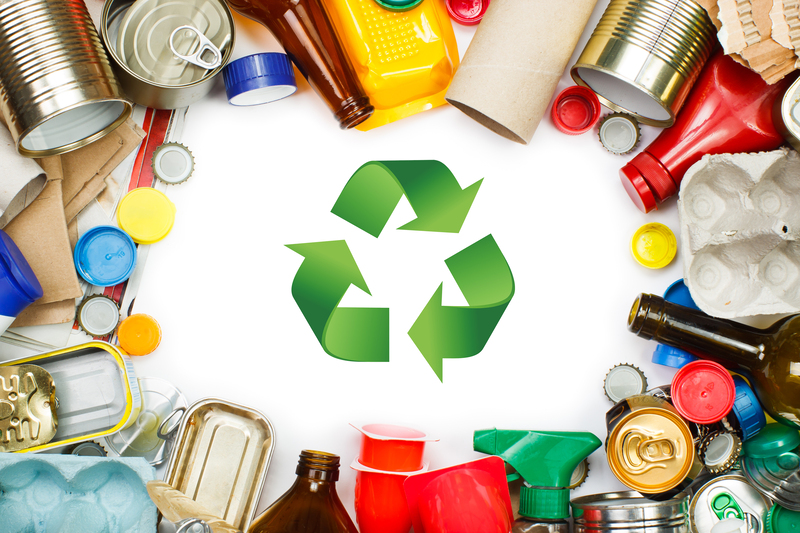How to Get Rid of PPE Waste Without Harming the Environment
PPE waste management has become a crucial topic for individuals, organizations, and governments around the world. As the use of personal protective equipment (PPE) such as masks, gloves, and gowns has soared--especially amid global health crises like the COVID-19 pandemic--the environmental impact of discarded PPE waste has raised urgent concerns. This comprehensive guide will explore sustainable, safe, and effective ways to get rid of PPE waste without harming the environment.
Understanding the Challenge of PPE Waste Disposal
Before we explore eco-friendly solutions, it is important to fully understand why PPE waste presents such a significant environmental challenge. PPE items are often made of synthetic materials such as polypropylene and other plastics, designed for single use. Improper disposal can lead to pollution of land and waterways, harm to wildlife, increased microplastics in the environment, and overwhelmed waste management systems.
- PPE waste accumulation can clog waterways and drainage systems, causing floods and water pollution.
- Microplastics from degraded PPE materials enter food chains and water supplies, posing health risks to humans and animals.
- Improper burning of PPE releases toxic chemicals into the air, negatively impacting air quality.
Therefore, finding sustainable PPE disposal methods is imperative for both public health and environmental preservation.
1. Why Is Proper PPE Waste Management Important?
PPE waste disposal is not just an environmental issue; it is also a matter of public health. Discarded gloves, masks, and other PPE can become contaminated with pathogens, risking further transmission of diseases.
- Environmental hazards: Unmanaged PPE contributes to the global plastic pollution crisis.
- Wildlife risk: Animals often mistake PPE items for food, leading to ingestion and suffocation.
- Human health: Accumulated PPE waste can harbor infectious agents if not safely contained.
Efficiently addressing PPE pollution brings about environmental restoration, reduces the spread of diseases, and aligns with global sustainability goals.
2. Step-by-Step Guide to Environmentally Friendly PPE Waste Disposal
Step 1: Segregate PPE Waste at Source
One of the most effective ways to manage PPE waste safely is to segregate it at the point of disposal.
- Clearly marked bins: Use bins labeled specifically for PPE to prevent it from mixing with general waste or recyclables.
- Household segregation: Home users should place used masks and gloves in a dedicated bag before disposal.
Step 2: Promote Safe Collection and Transport
Proper PPE waste collection is essential to minimize exposure:
- Dedicated collection schedules ensure regular removal from public places and healthcare facilities.
- PPE for waste handlers: Workers collecting PPE waste must use protective gear to reduce health risks.
Step 3: Explore PPE Recycling Options
PPE recycling is emerging as a viable solution to handle the exponential rise in PPE-related plastics:
- Specialized recycling programs: Some companies and local authorities have introduced recycling schemes specifically for used PPE, notably masks and gloves made from thermoplastic polymers.
- Thermal recycling methods sanitize and repurpose PPE into construction materials, like plastic bricks or tiles.
- Polypropylene recovery: Since many disposable masks are made of this plastic, specialized facilities can recycle them into pellets for manufacturing new products.
Step 4: Consider Safe Incineration with Energy Recovery
Incineration is one of the most commonly used PPE waste disposal techniques, especially for contaminated healthcare waste. When done correctly--using modern, controlled incinerators with energy recovery systems--the process can minimize harmful emissions, destroy pathogens, and generate energy.
- High-temperature incinerators: These ensure complete combustion and minimize toxic emissions like dioxins or furans.
- Energy recovery: Captures heat energy from burning PPE waste, converting it into electricity or heating for local use.
Step 5: Encourage the Use of Biodegradable PPE
Switching to biodegradable or compostable PPE products can greatly reduce the environmental impact of PPE waste.
- Materials such as cornstarch-based plastics, bamboo, or other biopolymers are now being used to produce biodegradable masks and gloves.
- Composting programs can handle biodegradable PPE via industrial composting facilities, reducing landfill dependency.

3. Innovative Solutions for PPE Waste Management
The world is witnessing groundbreaking innovations aimed at combating the hazardous effects of PPE waste on the environment. Here are some of the most promising solutions:
Plasma Pyrolysis
A high-tech process that uses extremely elevated temperatures to break down PPE waste into harmless gases and reusable byproducts, plasma pyrolysis is gaining popularity. It eliminates pathogens and drastically reduces the waste volume.
Mechanical Recycling Technologies
Mechanical recycling involves chopping, cleaning, and re-melting plastic PPE for use in new products.
- Challenges: Contamination of PPE can be a barrier, but advanced technologies are addressing these issues.
- Opportunities: Generates valuable raw materials for manufacturing, minimizing reliance on virgin plastics.
Chemical Recycling
In chemical recycling, plastics from PPE are broken down into their molecular building blocks for reuse as new polymers or fuels.
Upcycling and Creative Reuse
Some organizations and communities are repurposing used PPE in creative ways. For example, non-medical masks can be sanitized, shredded, and incorporated into construction materials, art installations, or even road surfaces.
4. Building a Holistic PPE Waste Management Strategy
Effective PPE waste management requires collaboration and a comprehensive approach--combining reduction, recycling, education, and policy enforcement.
Reduce: The First Step
- Encouraging reusable PPE: When feasible, such as washable cloth masks or reusable face shields, can dramatically cut down on waste volume.
- Rationalizing use: Avoiding unnecessary PPE use, especially in low-risk environments, conserves resources and prevents excess waste.
Educate: The Role of Public Awareness
- Clear guidelines: Educate the public and organizations about environmentally safe PPE disposal.
- Community involvement: Community-led PPE collection drives can reduce littering and increase proper handling rates.
Implement: Harnessing Technology and Policy
- Tracking waste streams: Employ digital platforms to monitor PPE waste from generation to disposal.
- Enforcing environmental regulations: Governments must ensure that PPE waste is managed strictly according to environmental safety standards.
5. PPE Waste Disposal for Households vs. Organizations
For Households
- Double-bag used PPE: Place used PPE in a secure bag and seal before disposing of it in household waste.
- Do not flush: Never flush masks, gloves, or wipes down the toilet, as it can block sewers and contaminant water bodies.
- Follow local disposal guidelines: Many areas have issued specific guidance for handling domestic PPE waste recycling and disposal.
For Organizations and Healthcare Facilities
- Color-coded bins for hazardous and non-hazardous waste help in systematic segregation.
- On-site disinfection through autoclaving or microwaving can render PPE waste safe for subsequent handling or recycling.
- Working with licensed waste contractors ensures compliance with both health and environmental laws.
6. The Role of Governments and Regulation
Governments and regulators play an essential role in enabling environmentally responsible PPE waste disposal through:
- Legislation: Enacting environmental PPE disposal rules that set standards and penalties for improper waste handling.
- Investment: Allocating funds for PPE-specific recycling infrastructure and public awareness campaigns.
- Research support: Funding new materials and technologies for sustainable PPE production and disposal.
- Monitoring and enforcement: Regular inspections to ensure that facilities comply with proper PPE waste disposal regulations.
7. How to Reduce PPE Waste at the Source
Opt for Reusable PPE Where Possible
When risk levels permit, opt for reusable PPE that can be safely sterilized and used multiple times, such as:
- Fabric masks
- Washable gowns and face shields
- Reusable gloves made from durable materials
Support Product Innovations
Backing companies that create eco-friendly and biodegradable PPE supports market transition away from petroleum-based plastics.
Educate Staff and Families
Provide up-to-date education and clear instructions about PPE use, minimization, and environmental impacts.

Conclusion: Building a Sustainable Future Free of Hazardous PPE Pollution
PPE waste disposal without harming the environment calls for a blend of responsibility, innovation, and policy. By segregating PPE waste, investing in recycling and biodegradable alternatives, supporting government action, and educating the public, we can work towards a safer, cleaner, and more sustainable future.
- Support biodegradable and reusable alternatives to cut down on single-use PPE.
- Promote community PPE waste drives and proper segregation practices.
- Encourage innovation in recycling and upcycling used PPE items.
- Back legislative frameworks on safe and sustainable PPE waste management.
Together, these actions will help us get rid of PPE waste without harming the environment and preserve our planet for the next generations.
Frequently Asked Questions on PPE Waste and Environmental Impact
Can PPE be recycled?
Many types of PPE, especially those made from polypropylene plastics, can indeed be recycled in specialized facilities. However, contamination and lack of infrastructure can be challenges. Look for local programs and participate in designated PPE recycling schemes.
What is the best way to dispose of a used mask at home?
Seal the used mask in a bag and dispose of it in your household waste bin, not in the recycling or compost bin. Always wash your hands after handling used PPE.
Are there biodegradable alternatives for common PPE items?
Yes, many companies now produce biodegradable or compostable masks, gloves, and gowns made from natural fibers and bio-based plastics. These are suitable for industrial composting and reduce environmental harm when properly disposed of.
What role can individuals play in sustainable PPE waste management?
Everyone can make a difference by opting for reusable PPE when safe, following local guidelines for disposal, and supporting initiatives for PPE waste collection and recycling.
How can businesses reduce PPE waste?
Businesses can encourage minimal use, educate staff about proper disposal, invest in bulk reusable equipment, and partner with certified PPE waste recyclers to minimize their environmental footprint.
Every mindful action and policy brings us one step closer to a world where PPE keeps us safe--without putting our environment at risk.